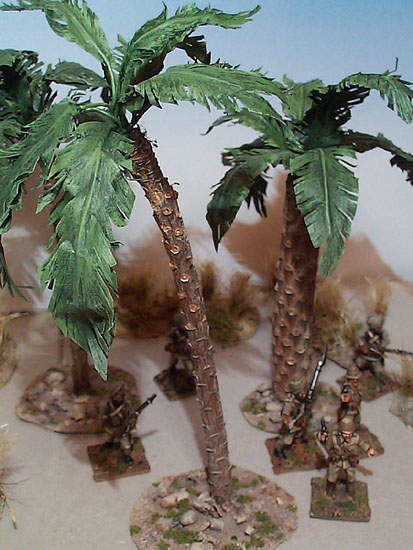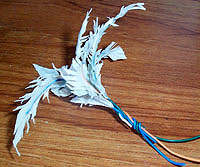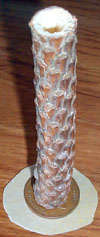Palm Trees
![]()
Masking Tape Foliage

 |
|
This method is the best way of making palm trees I have found (and
I've tried quite a few). These are relatively quick to make, very tough,
very cheap and look more like real palm trees than anything else I've
seen. |
Materials
|
|
|
1) Leaf 'Blanks'
|
|
Wrap tape over wire |
2) Shaping the Leaves
|
|
Feather leaves Making the head |
3) Trunk
|
|
Sticking to base Gluing head to trunk |
4) Base Texture and Painting
|
| Texture and paint the base - for the trees above, I have used the arid basing method described here. |
5) Painting
|
|
Leaves Trunk |
![]()
©2001. All rights reserved.
![]()
 Take
a piece of wire about 3" long. Stick the wire onto the end of the
masking tape, leaving just over an inch of naked wire. Next fold the
masking tape back on itself, leaving about half an inch of masking tape
at the end of the leaf with no wire in it. This is the standard size
of leaf, but it is good to make some more which are slightly larger
or smaller. However, keep the exposed wire stalk the same length on
each.
Take
a piece of wire about 3" long. Stick the wire onto the end of the
masking tape, leaving just over an inch of naked wire. Next fold the
masking tape back on itself, leaving about half an inch of masking tape
at the end of the leaf with no wire in it. This is the standard size
of leaf, but it is good to make some more which are slightly larger
or smaller. However, keep the exposed wire stalk the same length on
each. Cut
overall shape
Cut
overall shape Trunk
Trunk